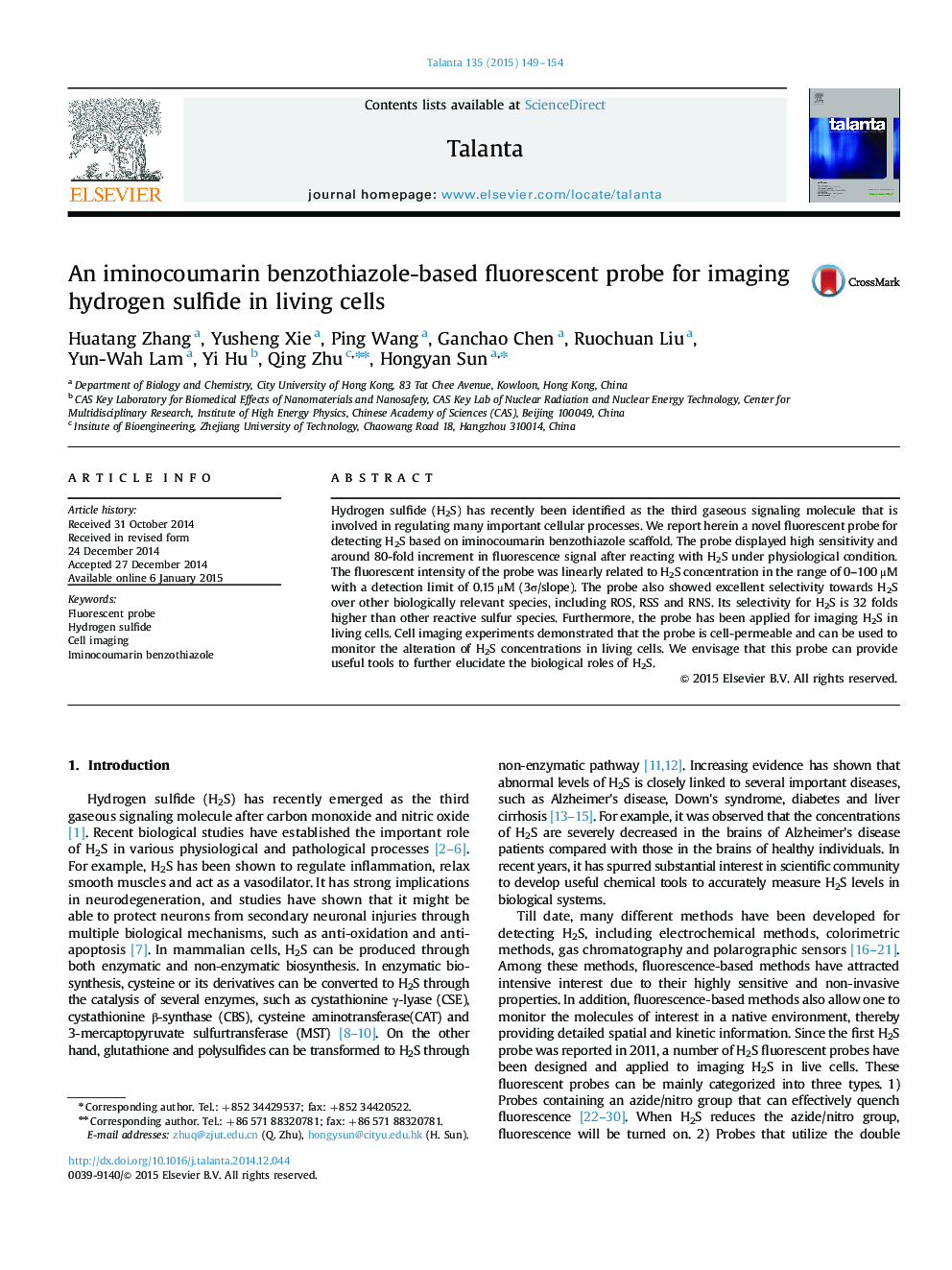| Article ID | Journal | Published Year | Pages | File Type |
|---|---|---|---|---|
| 1241972 | Talanta | 2015 | 6 Pages |
•A new fluorescent probe based on iminocoumarin benzothiazole was designed to detect H2S.•The probe has high selectively, with 80-fold fluorescence increment upon addition of H2S.•The probe is capable of monitoring the alteration of H2S concentration in living cells.
Hydrogen sulfide (H2S) has recently been identified as the third gaseous signaling molecule that is involved in regulating many important cellular processes. We report herein a novel fluorescent probe for detecting H2S based on iminocoumarin benzothiazole scaffold. The probe displayed high sensitivity and around 80-fold increment in fluorescence signal after reacting with H2S under physiological condition. The fluorescent intensity of the probe was linearly related to H2S concentration in the range of 0–100 μM with a detection limit of 0.15 μM (3σ/slope). The probe also showed excellent selectivity towards H2S over other biologically relevant species, including ROS, RSS and RNS. Its selectivity for H2S is 32 folds higher than other reactive sulfur species. Furthermore, the probe has been applied for imaging H2S in living cells. Cell imaging experiments demonstrated that the probe is cell-permeable and can be used to monitor the alteration of H2S concentrations in living cells. We envisage that this probe can provide useful tools to further elucidate the biological roles of H2S.
Graphical abstractWe report a new fluorescent probe based on iminocoumarin benzothiazole to detect H2S selectively, with 80-fold fluorescence increment upon addition of H2S.Figure optionsDownload full-size imageDownload as PowerPoint slide
